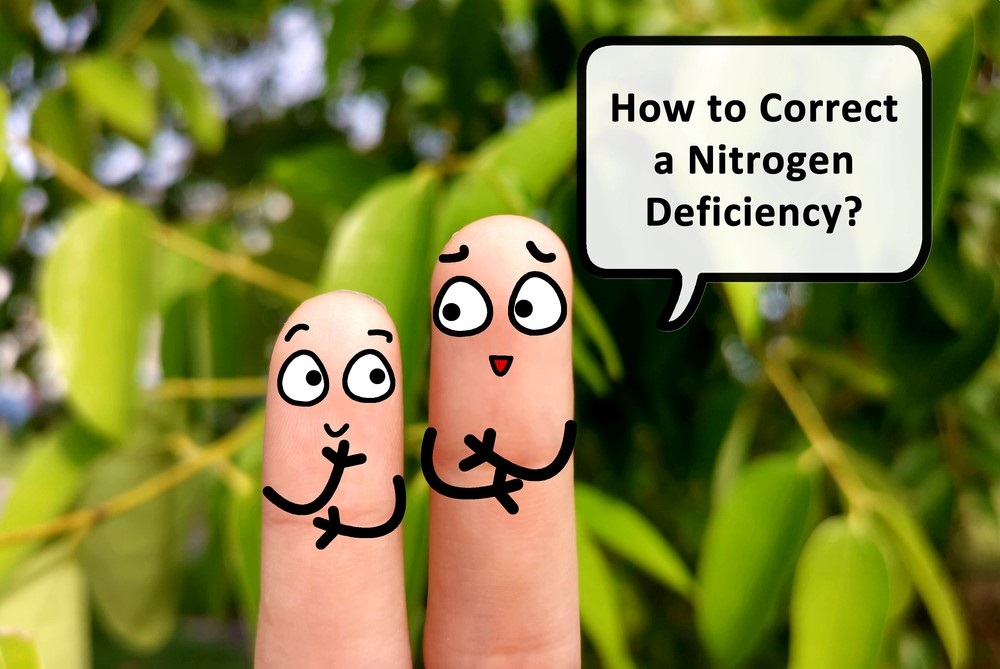Essential nutrients help plants grow and develop while staying healthy.

Basic physiological functions include root growth, photosynthesis, and the ability to absorb nutrients from the soil, depending on nutrients. Plants can show a range of symptoms when they are deficient in nutrients.
These symptoms range from stunted growth to necrosis or premature seed ripening. Nutrient deficiency in plants can also be expressed by the appearance of several symptoms at once. The more severe the symptoms, the longer the cultures remain deficient. That is why plant nutrient deficiency identification, which you will learn about in this article, is so important.
Nutrient Deficiency Symptoms
Nutrient deficiency symptoms in plants may initially appear as slow growth without additional symptoms. It usually occurs at the beginning and end of the growing season. In the first case, the soil can still be cold and wet, and then the crop grows so fast that the soil does not have time to satisfy the activity of the plants.
Regardless of what caused the deficit, this problem can be solved with the help of appropriate management methods. In any case, careful monitoring of the condition of crops is necessary at all stages of the growing season.
The result of nutrient deficiency is a violation of crops’ metabolic processes, which ripen unevenly. As a result, the quality and quantity of the yield are reduced.
The issue should be addressed as soon as you notice the first symptoms of deficiency to eliminate the crop stress. However, not all plants are equally prone to symptoms, so it is necessary to be able to diagnose and have knowledge about the markers and signs of nutrient deficiency in plants.
Understanding Nutrient Deficiencies In Plants
Oxygen, carbon, and hydrogen are the crucial components that the crops gain from the air. However, the rest of the crop came from the ground and added materials. Plants primarily require primary macronutrients such as N, P, and K. S, Ma, and Ca are secondary macronutrients. In addition, essential elements are iron and zinc.
Plant nutrient deficiency occurs when certain substances are missing from the ground or fertilizer It can also happen with an abundance of nutrients if they are not available for plants. The reasons for this phenomenon may be poor drainage, damage to the root system, and improper irrigation.
In addition, soil pH imbalances can also interfere with nutrient uptake. For example, substances such as Fe are the best available to crops in acidic soils, and iron absorption is blocked in excessively alkaline soils.
Read Also:
Signs Of Nutrient Deficiencies in Plants
Nutrients transfer through crops and in the ground in different ways. Nitrogen moves quickly through the ground but is washed out by rain or heavy watering. It also rolls in plant tissues from old leaves to tops. With a lack of N, nutrients continue to move through the crop but do not feed the old leaves properly.
Calcium is a less mobile substance. For this reason, it is only enough for old leaves, but it does not reach young ones and does not ensure the growth of new ones. Thus, calcium deficit appears on young leaves.
Plant nutrient deficiency identification begins with determining whether the deficiency symptoms are in young or old leaves. A lack of nitrogen is expressed by the yellowing of old leaves and the spread of yellowness throughout the plant in the future. If older leaves turn brown, red-violet, or unnaturally dark green, this is evidence of a lack of phosphorus.
With a lack of potassium, old leaves also change color and become bright yellow or brown spots appear on them. Yellow spots between the veins indicate a lack of magnesium, and a pale green shade of the leaves suggests that the plants need molybdenum.
If young leaves are affected and have turned pale green or yellowish, the plants are deficient in calcium. In addition, the lack of this substance can be expressed by rotting vegetables at the end of flowering and brown or black leaf tips. If young leaves turn yellow ultimately, they lack sulfur.
If young leaves turn yellow between the veins or creamy white, this indicates an iron deficiency. Yellowing between the veins of young leaves also occurs due to a lack of manganese, zinc, and copper, and boron deficiency leads to yellowing of the edges of young leaves.
Nutritional deficiencies also present with other symptoms if not controlled. Stunting, lack or reduction of lateral branching, dying off, and poor bud, flower, and fruit development are also symptoms of a nutrient deficiency.
Correcting And Preventing Nutrient Deficiencies
Soil Testing
Testing the soil at the beginning of the season plays a vital role in preventing nutrient deficiencies in the future. Soil analysis will allow you to use fertilizers as efficiently as possible and avoid nutrient deficiency or surpluses.
Simultaneously with soil samples, it is useful to collect plant tissue samples to test nutrient levels. In addition, the analysis of plant tissues during the season also makes it possible to verify the effectiveness of fertilizers application and check the concentration of nutrients.
Remote Sensing from Satellite Imagery
Remote sensing with satellite imagery allows remote detection of nutrient deficiencies. Moreover, this technology will enable farmers to use fertilizers more accurately and efficiently.
Regular monitoring of nutrient levels using remote sensing technologies allows the development of efficient agricultural strategies for fertilizer distribution and economic application, resulting in a reduced negative impact on the environment.
When combined with machine learning technologies, remote sensing becomes even more beneficial for farmers. Thanks to this combination, growers can analyze the spatial distribution of primary and secondary nutrients in the fields and monitor their concentration throughout the growing season. Accurate data on the concentration of nutrients make it possible to adjust the number of applied fertilizers and their consistent distribution to increase yields.










